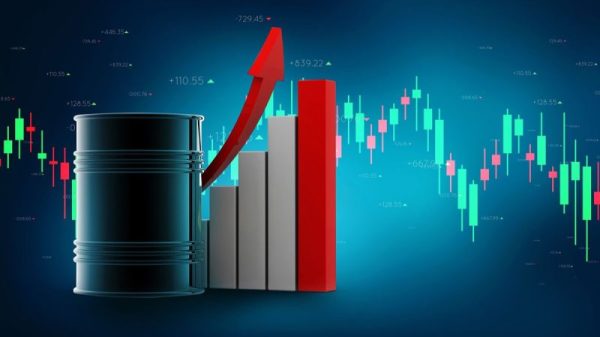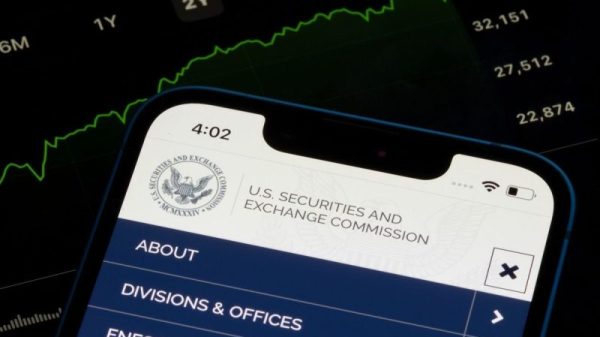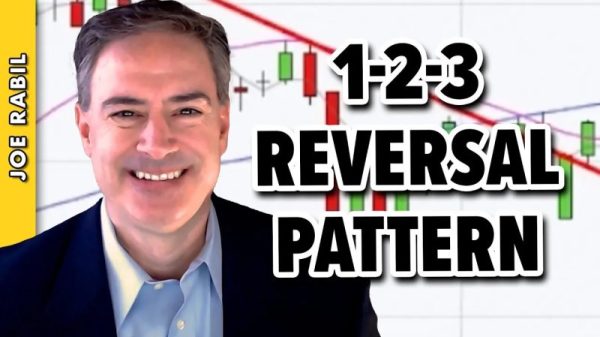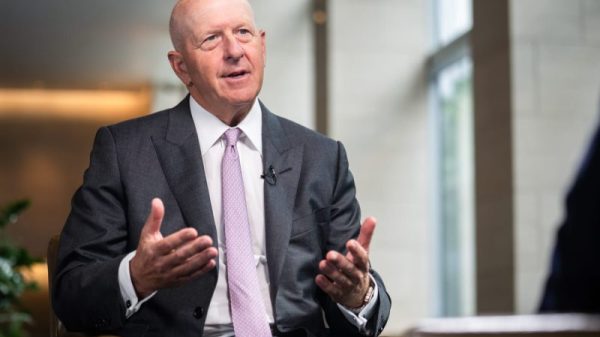The first quarter of 2024 was a mixed bag of optimism, caution and resilience in the cryptocurrency market.
All in all, the crypto sector saw notable growth and increased investor interest in Q1 against a backdrop of positive macroeconomic trends. Data from PitchBook Data shows that the crypto and blockchain markets secured US$2.52 billion in capital during the first quarter of this year, marking a 25 percent increase from Q4 2023.
This surge occurred as the S&P 500 (INDEXSP:.INX) gained 10.2 percent over Q1, the index’s largest first quarter increase since 2019, buoyed in part by expectations of potential interest rate cuts in 2024. Additionally, many major markets, including those in the US, Canada and Australia, posted strong Q1 performances, further supporting investor optimism.
With Bitcoin reaching new heights, the arrival of spot Bitcoin exchange-traded funds (ETFs) and a rebound in institutional investment, the crypto industry showcased its growth potential in Q1. However, concerns about volatility and security underscore the challenges that lie ahead, and questions surrounding long-term, sustainable growth linger.
Crypto market reacts to Bitcoin ETF approval
In January, the crypto market hit the ground running with a flurry of activity.
Investors put US$1.9 billion into spot Bitcoin ETFs during the first three days of trading following their launch on January 10. Institutional crypto trading reached an all-time high of US$17 billion in total moves during the ETFs’ launch week.
Bitcoin’s price didn’t fare well in the weeks following the launch; by January 23, it had fallen to US$39,504, more than 10 percent below its Q1 opening price of US$44,168. The entire crypto market cap fell 16 percent from its January 12 peak by January 23.
Analysts surprised by the drop after the ETF approval news suggested that the initial rally was a “sell the news” event. FTX’s sale of approximately US$1 billion of Grayscale’s Bitcoin ETF, which briefly caused an 18 percent surge in the value of FTX tokens, also contributed to a large outflow of funds from the market.
In terms of price stability, Ethereum outperformed Bitcoin in the days following the spot ETF approval as interest in a spot Ether ETF gained traction. Between January 10 and January 15, Bitcoin’s valuation fluctuated 8.67 percent while the price of Ether only saw a price difference of 2.82 percent. On January 12, BlackRock CEO Larry Fink said during an interview with CNBC that he saw “value” in offering spot ETFs for Ethereum. “These are just stepping stones towards tokenization,” he added.
Simultaneously, liquid restaking emerged as a trend in the decentralized finance (DeFi) sector, with the combined value of three leading liquid restaking protocols reaching US$461 million as of January 16, indicating significant interest.
On the legal side of the sector, Coinbase tried to have a lawsuit filed by the US Securities and Exchange Commission (SEC) against the trading platform dismissed. In response to the SEC’s accusation that Coinbase sold unregistered securities, the platform argued that crypto tokens couldn’t be considered securities as buyers don’t acquire the same rights they do with stocks and bonds purchases, and compared buying crypto to collecting Beanie Babies versus buying the company that makes them.
US District Judge Katherine Polk Failla ultimately denied the motion to dismiss all but one charge, and the two will face off in court on July 13.
Institutional adoption sets stage for price surge
February was an eventful month for the crypto markets, characterized by significant price movements and continued institutional and retail investment. Both Wells Fargo and Bank of America’s Merrill Lynch began offering spot Bitcoin ETFs to clients, indicating growing interest and acceptance from traditional financial institutions.
Gareston sees this as an essential component of the crypto industry’s evolution, saying that the industry can advance towards widespread acceptance and stability through prioritizing partnerships with regulators and embracing risk mitigation.
“I think there are many incumbent market participants that continue to struggle to see the true merits of the broader digital asset ecosystem, and there are also many in the digital asset ecosystem that prioritize disruption, continuing to view digital assets as an alternative to existing financial structures. To me, the focus should be on the broader digital asset industry as a (complement) to and expansion of more traditional financial services.”
Meanwhile, Bitcoin began to recover, and reached two milestones not seen in more than two years — it passed US$50,000 on February 12, then surged 8 percent in 24 hours to US$64,000 on February 28. Coinbase crashed during the latter price jump and users reported that their accounts reflected a US$0 balance, prompting a panicked sell off that saw Bitcoin’s price fall 10 percent in just 15 minutes.
Volatility erodes gains
March was a bustling period for the crypto market as spot trading volume surged to US$111 million, nearly threefold February’s US$42.2 billion total.
Bitcoin’s price came into March with upward momentum and broke through US$68,000 on March 4, bringing its total market cap hit to US$1.3 trillion, near that of silver’s US$1.38 trillion. After a brief dip, Bitcoin reached a new all-time high of US$73,865 on March 13. It remained volatile throughout the month, falling in the days after that high as well as on March 19, and largely fluctuated within the range of US$60,000 and US$70,000.
Analysts had mixed opinions, with JP Morgan cautioning that it could potentially drop below US$42,000 and Bitwise Chief Investment Officer Matt Hougan expressing optimism about Bitcoin’s trajectory and asset allocation.
BlackRock opened a new filing with the SEC to purchase more Bitcoin ETFs for its Strategic Income Opportunities Fund on March 4 as total daily sales of Bitcoin ETFs reached US$5.4 billion.
Focused on attracting investors, VanEck announced it was waiving fees for its spot Bitcoin ETF until March 31, 2025, while Grayscale filed for a spin-off of its successful Grayscale Bitcoin Trust in order to offer lower fees. Grayscale also introduced a crypto staking fund, the Grayscale Dynamic Income Fund, comprising a digital asset collection.
On March 19, due to a drop in Bitcoin’s price, Grayscale’s spot Bitcoin ETF experienced a record daily outflow of US$642.5 million followed by a week of outflows totaling US$890 million. Inflows resumed the following week as Bitcoin’s price rebounded.
MicroStrategy expanded its Bitcoin holdings significantly during the month when it acquired 12,000 Bitcoin for US$822 million on March 10 and 9,245 Bitcoin for US$623 million on March 19, which brought its total holdings to 214,246 Bitcoin — over 1 percent of the maximum supply of 21 million. The company paid for the purchases with multiple convertible debt offerings.
Meanwhile, Ethereum rolled out the Dencun upgrade, leading to an uptick in Layer 2 adoption and substantially reducing transaction fees for Layer 2 network users. Ether’s price climbed in the weeks leading up to the upgrade and hit a two-year high of US$4,064 on March 13 before pulling back to the US$3,500 range for the remainder of the quarter.
On March 20, BlackRock launched the world’s first tokenized fund, BUIDL, on the Ethereum blockchain, and it attracted over US$240 million in inflows within a week. However, it wasn’t all good news for Ethereum; regulatory hurdles persisted, as the SEC delayed decision-making on proposed spot Ethereum ETFs for the second time at the beginning of the month.
March also saw a heightened interest in meme coins like Solana’s native token SOL, which surpassed US$160 in valuation on March 13, its highest price point since January 2022.
“Initially, I held a strong skepticism towards meme coins, questioning why individuals would invest in projects lacking real-world utility and use cases,” Greco said. “However, as I delved deeper into the space and observed the market cycles, I came to recognize meme coins as a significant representation of the digital assets’ internet community. I believe meme coins will continue to be an integral part of this sector for the foreseeable future.”
What factors will move the crypto market in 2024?
As volatility in the crypto sector continues into Q2, the experts we spoke to weighed in on several trends they expect to affect the sector in the next quarter and beyond.
“Over the coming months and years, I anticipate a significant increase in regulatory oversight,” Greco said. “The SEC has intensified its scrutiny of digital assets service providers in recent years, culminating in the recent approval of BTC Spot ETFs. Additionally, in Europe, the Markets in Crypto-Assets Regulation will soon come into effect, while jurisdictions across Asia and other continents are also working to establish clearer and more precise regulatory frameworks for both service providers and investors.
“This shift towards increased regulation is likely to result in a transformation of the market structure, with less ‘wildness’ and more transparency. Naturally, this will also lead to changes in the composition of investor cohorts compared to those seen in the past.”
To that point, in the US, the SEC, the Commodity Futures Trading Commission and the Treasury Department requested Congress provide more funding in the 2025 fiscal year to hire 33 more people to oversee “new and emerging issues,” many of which center on the cryptocurrency sector.
Additionally, if previous trends are any indication, the Bitcoin halving, which is anticipated to take place on April 19, will undoubtedly affect market dynamics. Historical trends indicate that the nine to 12 months following halving events have been bullish in previous cycles, suggesting that the peak of this cycle may occur between late 2024 and the first half of 2025. However, even during upward trends, Bitcoin has experienced dips of 25 to 30 percent, making it exceedingly challenging to predict short-term price action.
The approval or rejection of spot Ethereum ETFs will also be a catalyst moving forward, although it remains to be seen if a decision will arrive in the coming months.
“I think market reaction would be overall net positive if a spot Ether ETF were to be approved in the United States,” Gareston speculated. “The ETF vehicle itself supports the asset, and there appears to be enough investor demand to continue to drive the initiative from a commercial perspective. Canada, for example, has had spot Ether ETFs for the past three years or so, where custodied Ether can now be ‘staked’ to generate an additional, novel revenue stream for fund investors in accordance with applicable Canadian securities laws. I personally am bullish on the likelihood of SEC approval of spot Ether ETFs, but I think the timeline will be beyond 2024.”
“Regarding market reaction, we may witness a similar trend to BTC, albeit with potentially lesser impact,” he hypothesized. “Initially, there could be outflows from the Grayscale Ethereum Trust, offsetting inflows into other newly launched ETFs. However, once the outflow subsides, net inflows are expected to strengthen. Ethereum continues to attract significant interest, and financial products with ETH as the underlying asset could attract substantial investments.”
Securities Disclosure: I, Meagen Seatter, hold no direct investment interest in any company mentioned in this article.





























